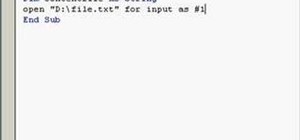

Operation:=xlNone, SkipBlanks:=False, Transpose:=Falseĭim strCycle As String, i As Integer, trgSheet As String, sht As Worksheet WsCopyTo.Range(“a2”).PasteSpecial Paste:=xlPasteValues, _ Set wsCopyFrom = wbCopyFrom.Worksheets(1) “*.xl*”, 1, “Select Excel File”, “Open”, False) VFile = Application.GetOpenFilename(“Excel Files (*.xl*),” & _ New Workbook data range paste to A2:D2, next A3:D3 and so on.

I would like the macro button also to move down each time the new data is imported. I would like a macro to import some of the information from the master sheet, I have 3 sheets in the workbook, from each sheet I would need to copy few cell data (any range would be fine, i will change that to fit by needs) to a new workbook. I have an excel master sheet that is created for every customer filename will change each time, the workbook layout is the same. In the same way you can mention the workbook name, if you are reading the data from different workbooks. 'Here the left side part is sheets to refer and the right side part is the range to read. The below example is reading the data from Range A5 of Sheet2: If you want to read the data from another sheet, you have to mention the sheet name while reading the data. When you are reading using Cell or Range object, it will read the data from Active Sheet. Get Data from Worksheet Cell – Specifying the Parent Objects If you select any cell in the worksheet, you can see the name of that cell in the Name Box. Here is sample picture, which helps you to understand this concepts. 'Here you have to specify the Cell Name which you want to read - A is the Column and 1 is the Row
#VBA TO READ FILE DETAILS HOW TO#
The following example will show you how to read or get the data from Worksheet Cell or Range using Range Object. Get Data from Worksheet Cell – An Example of using Range Object Any Row or Column number start with 1 and You have to specify Cell(RowNumber,ColumnNumber) to read the data from a Cell of the Worksheet. In this example I am reading the data from first row and fourth column of the worksheet. 'Cells(1, 1) means first row first column 'Here the first value is Row Value and the second one is column value In this example I am reading the data from first Cell of the worksheet. The following example will show you how to read or get the data from Worksheet Cell using Cell Object. Get Data from Worksheet Cell – An Example of using Cell Object We can use Cell or Range Object to refer a Worksheet Cell. It is very simple to read the data from Excel to VBA. Read or Get Data from Worksheet Cell to VBA in Excel – Solution(s): Finding the definition is easy in most procedures, but in a long procedure, with a long list of variables, the Definition command really makes the job easier.Its one of my first questions when I started learning EXcel VBA, How to Read or Get Data from Worksheet Cell to VBA? To automate any thing in excel, first we need to read the data in Worksheet and based on that we can execute the next steps. The other right-click command that I finally discovered is the Definition command.Ĭlick the Definition command, and it takes you to the selected variable’s definition. What I didn’t realize was that you can right-click on a variable, function, statement, method, or procedure in the code, and click Quick Info.Ī tooltip appears, with details on the selected item.

I have Auto Quick Info turned on in the VBE Editor options, and it helps me remember the syntax as I type the code. These commands can help you decipher that mysterious code, and unravel the complicated sections.

I spend lots of time staring at Excel code, but apparently I don’t use the right-click menu too often, because I hadn’t noticed a couple of handy commands until recently. Did you ever get an Excel file from someone else, and try to sort out their Excel VBA code? Or, even worse, open an Excel file that you wrote long ago, and try to remember what all those variables mean?


 0 kommentar(er)
0 kommentar(er)
